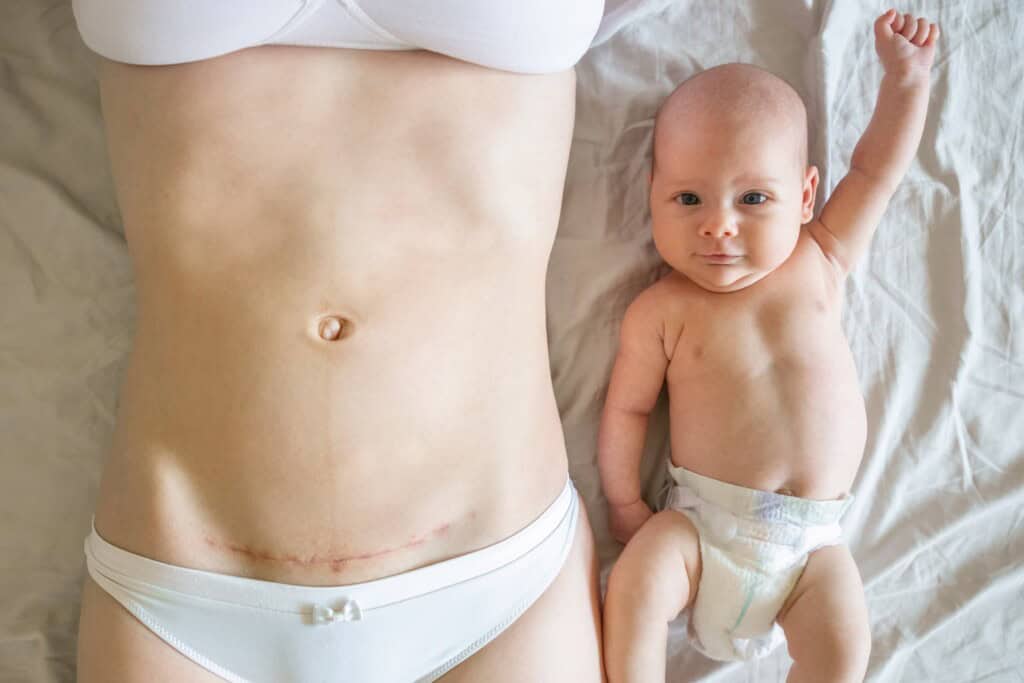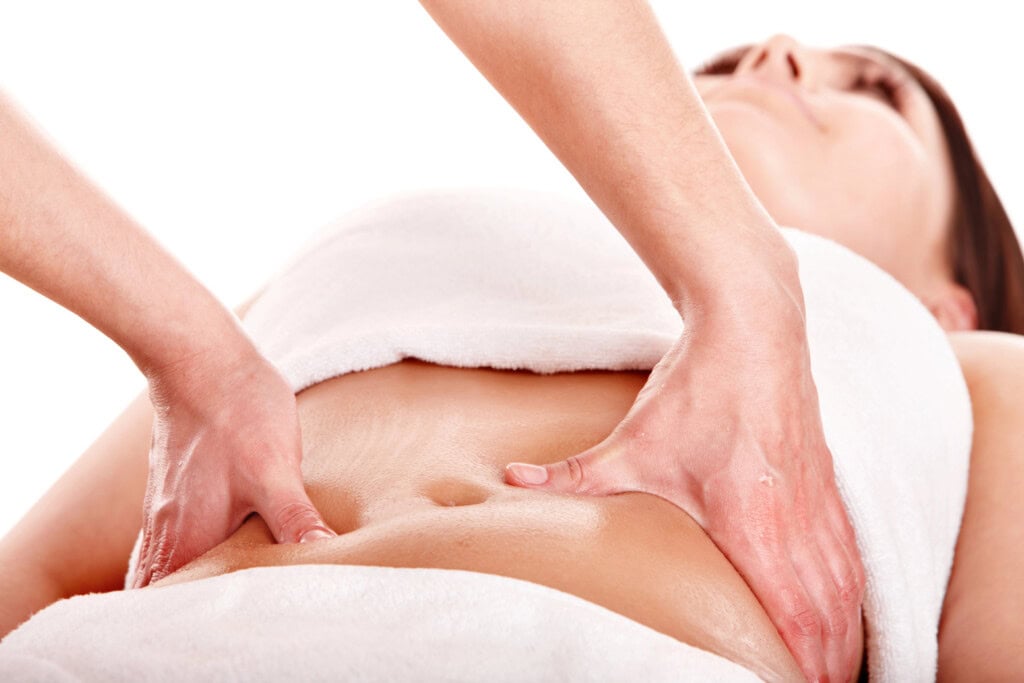C-section scar tissue pain is no joke. I’ve helped many women navigate this post-surgery hurdle, and I know firsthand how effective bodywork therapy can be. Let’s talk about how it can help you feel better and get back to your normal self.
There are two things about C-Section Scar Tissue Pain that may be surprising to learn. First, C-Section Scar Tissue Pain may be felt in the back not in the front where the scar is located. Second, the pain may not come until many months, or even years later!
After a C-section, your body naturally forms scar tissue as part of the healing process. This happens with any surgery, burn, or injury. Sometimes, this scar tissue can lead to discomfort or pain, which we call C-section scar tissue pain.
Scar tissue doesn’t always develop in neat, orderly lines. It can be unpredictable, growing in various directions.
While the visible scar on your skin might fade and cause no issues, denser scar tissue can form beneath the surface. These scars can run deep and may not be noticeable, making them more challenging to diagnose. This deeper tissue can create a pulling sensation or feeling of restriction when you move, making your body work harder than it should for everyday movements.
C-section scar tissue pain can present in various ways. You might experience:
In terms of how it feels, this pain can range from a constant tugging or tightness around your lower abdomen or lower back, especially when moving or bending.
Some describe it as a sharp, stabbing pain that catches them off guard, while others may experience a dull, ache that never goes away.

Scar tissue is your body’s way of patching things up, but sometimes it goes overboard. Here’s what might make your scar tissue pain worse:
Figuring out if you’ve got C-section scar tissue pain isn’t always straightforward. Your health provider will likely:
These can rule out other issues, like a hernia or endometriosis.
Treatment of C-section scar tissue pain often involves:
While these conventional treatments can be effective, they often focus on managing symptoms rather than addressing the root cause of the pain — scar tissue adhesions. This is where bodywork therapy comes into play, offering a more holistic approach to healing.
Bodywork therapy involves hands-on techniques to manipulate muscles, fascia, and scar tissue. Here’s how it helps:

Here’s why bodywork therapy is a game-changer:
The duration varies, but with proper care and bodywork therapy, many women experience significant improvement within a few sessions. Consistency is key!
While some aches and pains are normal after a C-section, don’t ignore these red flags:
Let’s talk about keeping scar tissue drama to a minimum:
You bet! It’s never too late to start. Old scars can still benefit from massage, making them softer and less painful over time. Many people overlook that a C-section scar, even if it’s several years old, can continue adhering to the tissue, organs, and bones around it.

Absolutely! That little pooch above your scar can improve with massage. It helps with fluid movement and can reduce the pouch’s appearance.
Regular bodywork therapy can:
Definitely! Try these at home:
Stephanie sought relief from lower back pain at Bodywork Masters. During her intake, I noticed that Stephanie had a C-section scar from a few years prior. With Stephanie’s permission, I used bodywork techniques to release the deep adhesions resulting from the C-section.
After just one session, Stephanie experienced noticeable relief from her tight lower back. She continued with weekly sessions to further address the deep adhesions. Several weeks later, Stephanie shared some exciting news with me — she was pregnant! She also revealed that she had been struggling with secondary infertility since the birth of her last child. Coincidence? Maybe, maybe not.
Bodywork on the abdomen can alleviate not just C-section scar pain but also address scar tissue associated with conditions such as endometriosis, polycystic ovary syndrome, and other disorders that cause adhesions in the abdominal area.
C-section scar tissue pain doesn’t have to be a permanent part of your life. Through consistent bodywork therapy, you can experience significant improvements in pain relief, mobility, and overall comfort. Whether your scar is new or old, massage therapy can help make it softer and less painful.
Book your first session today. Let us help you take control of your health and well-being.